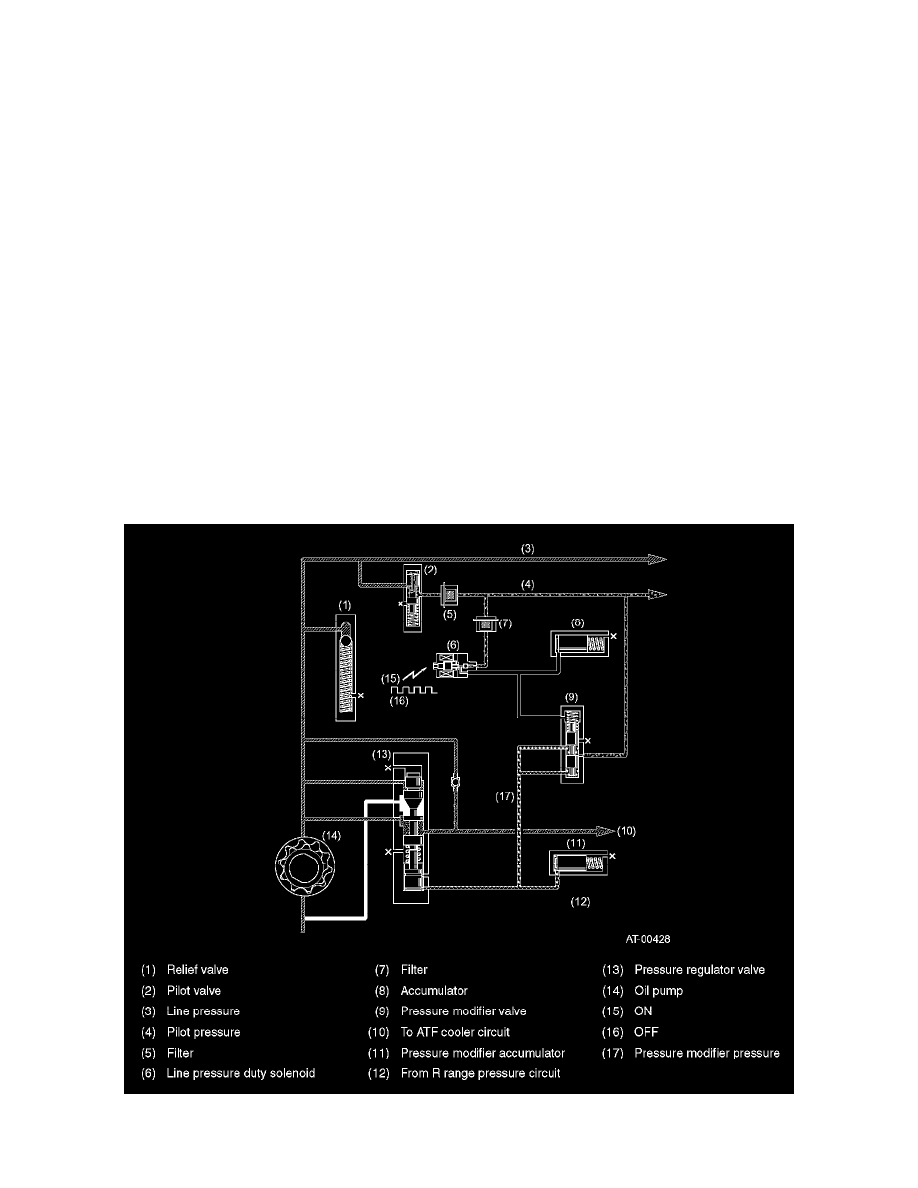Baja F4-2.5L SOHC (2003)

-
A shift to each gear takes place according to ON-OFF operation of both the solenoids as indicated in the table above.
LOCK-UP CONTROL
-
The TCM has pre-programmed lock-up clutch engagement and disengagement conditions for each gear and shift pattern. In addition, it specifies
engagement of the clutch whenever the 4th gear is selected in the D range. The engagement and disengagement conditions are defined in terms of
the throttle valve position and vehicle speed.
-
The TCM controls the operation of the lock-up clutch by means of the duty solenoid which in turn controls the lock-up control valve as described
below:
Non-Lock-Up Operation
The duty solenoid allows the pilot pressure (supplied from the pilot valve) to be applied to the "disengaging" end of the lock-up control valve spool.
The lock-up control valve then opens the clutch disengaging circuit port to allow the lock-up operating pressure (torque converter clutch regular
pressure) to build up in the circuit. On the other hand, the valve opens the clutch engaging circuit's port and allows the fluid in the circuit to flow to the
ATF cooler, thus lowering the pressure in the circuit. As a result, the lock-up clutch is disengaged due to difference in pressure between both circuits.
This operation is performed for all the speed gears except the 4th gear of the D range.
Lock-Up Operation
The duty solenoid allows the pilot pressure to be applied to the "engaging" end of the lock-up control valve spool. The lock-up control valve then
opens the clutch engaging circuit's port that communicates to the torque converter's impeller chamber, allowing high pressure fluid to flow to the
lock-up clutch.The clutch then engages.
The TCM controls the current to the duty solenoid by gradually changing the current. As a result, the lock-up control valve also moves gradually, so
the clutch engagement pressure increases smoothly. This causes the lock-up clutch to become initially in a half-engaged state and then in a fully
engaged state, thus preventing shock during engagement.
This operation is performed for all the speed gears and always when the 4th gear is selected in the D range.
LINE-PRESSURE CONTROL
-
The oil pump delivery pressure (line pressure) is regulated to a constant pressure by the pilot valve.This pressure is used as the pilot pressure for
